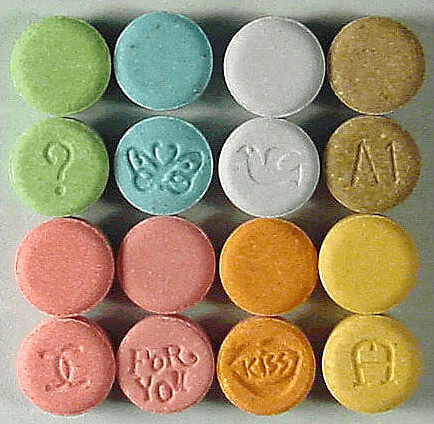1.2 Psychoactive Drug Classifications & Effects
Christine Miller and Jacqueline Lewis
Psychoactive drugs are divided into different classes based on their pharmacological effects. Several classes are listed below, along with examples of commonly used drugs in each class.
- Depressants are drugs that calm the brain, reduce anxious feelings, and induce sleepiness. Examples of depressants include: ethanol (in alcoholic beverages) and opioids, such as codeine and heroin.
- Hallucinogens are drugs that can cause hallucinations and distorted perceptions. They also cause changes in thoughts, emotions, and consciousness. Examples of hallucinogens include: LSD, mescaline, nitrous oxide, and psilocybin.
- Opiates/Opioids are drugs that suppress the central nervous system. They slow down breathing, heart rate, thoughts, actions, and alter perceptions of pain. The term opiate is generally used to refer to natural versions of the drug, those derived from the opium poppy. The term opioid refers to products that are synthetic or manufactured.
- Stimulants are drugs that stimulate the brain, increase alertness and wakefulness. Examples of stimulants include: caffeine, nicotine, cocaine, and amphetamines (such as Adderall).
- THC (Tetrahydrocannabinol) is the primary psychoactive component found in the cannabis/marijuana plant. Products containing THC (e.g., cannabis dried leaves, extracts, edibles, etc.) can have a variety of effects including: relaxation; euphoria; impaired concentration, coordination and memory; changes in sensory perception, blood pressure and appetite.
Many psychoactive drugs have multiple effects, so they may be placed in more than one class. An example is MDMA (see image below), which may act as both a stimulant and a hallucinogen. MDMA’s efficacy as a treatment for post-traumatic stress disorder (PTSD) and other types of anxiety disorders, is showing promise in some recent studies (Stone, August 14, 2019). THC is another substance that is hard to classify, as it can act as a stimulant, a depressant, and/or an hallucinogen. This is why THC is often placed in a category of its own.

VIDEO: Overview of Psychoactive Drugs
The following video provides an overview of the different classifications of psychoactive substances.

